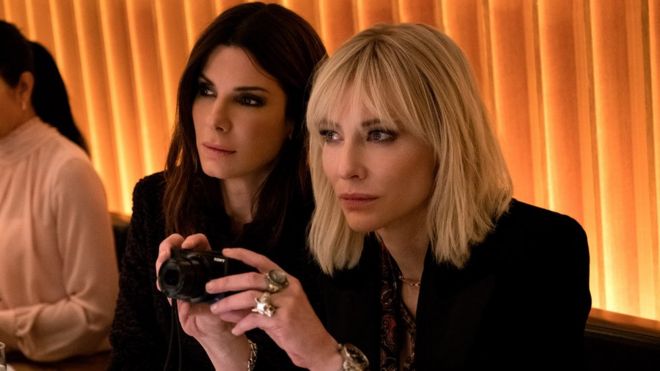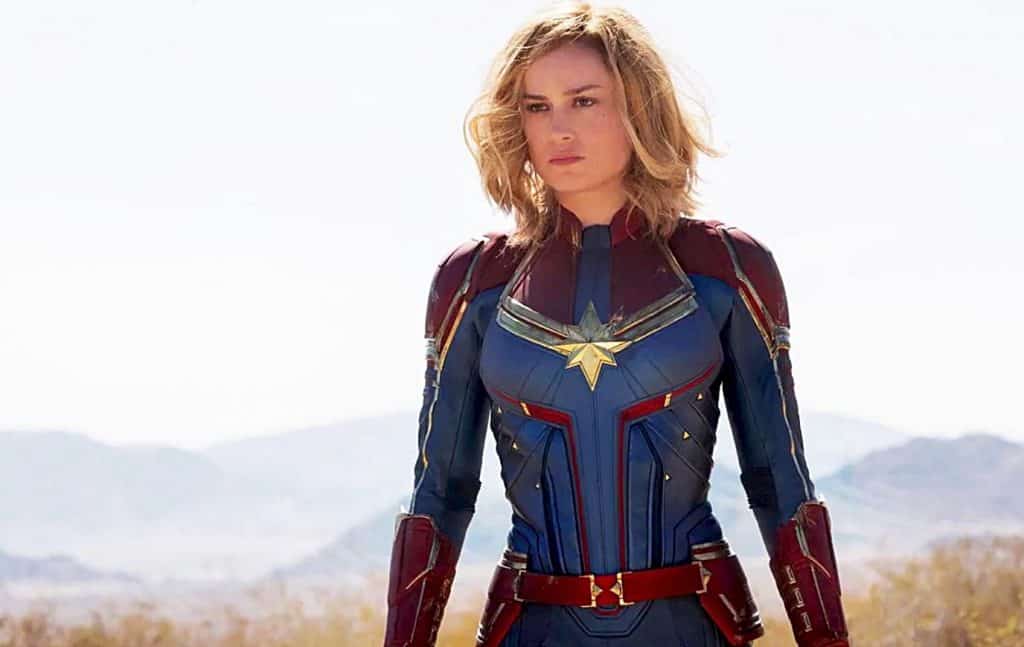I explained most of the history behind the Ocean’s Eight movie in the last post, but in this one, I’ll focus on the cast of the movie in greater detail.

The heist in Ocean’s Eight is carried out by a team of eight talented women, played by equally talented actresses. Debbie Ocean (Sandra Bullock) heads the team, filling the same role that her older brother, Danny Ocean, took in the original Ocean’s Eleven trilogy. She is incredibly smart, cunning, and confident. The elaborate plan that she crafted to carry out the heist during her five years in prison was genius (although not entirely believable as the plots from the original trilogy also were). Bullock’s formidable acting skills and ability to connect with the audience make her a strong lead.
Her right-hand woman is Lou (Cate Blanchett), an old partner who fills the same “wingman” type role as Rusty (Brad Pitt) in Ocean’s Eleven. As one review put it, Blanchett “[wraps] her character in just enough mystery to keep you transfixed.” Many audience members were left wanting to know more about the secretive club owner.
While the rest of the team fills more minor roles, each brings something unique to the group. Helena Bonham Carter plays a somewhat disgraced fashion designer whose proximity to the event where the heist would take place (the Met Gala) and the actress who they convinced to wear the jewels that they wanted to steal (Diane Kluger, played by Anne Hathaway) made her an invaluable member. Mindy Kaling’s diamond expert, Sarah Paulson’s merchandise fencer, Rihanna’s computer genius, and Awkwafina’s gifted pickpocket rounded out the team with crucial skills, responsibilities, and personalities.

(WARNING: SPOILERS!) If you’ve been keeping count, you may have noticed that I only mentioned seven team members. As a surprise twist at the end of the movie, Diane Kluger (Anne Hathaway), the team’s mark throughout the movie, is revealed to have been in on the heist. She is the haughty, conceited actress heading the Met Gala that they tricked into wearing the necklace that they hoped to steal. Hathaway nails her performance, “[turning] the part of a clichéd Hollywood female narcissist into a disquisition on performative femininity.”
While this talented team does occasionally turn the movie into “the clever, easygoing comedy we’ve long hoped it would be,” journalists like Vanity Fair’s Richard Lawson wrote of their wish that “that mood was sustained throughout.” However, nearly every review cites that the problem lies not in the cast but in the director, Gary Ross, who was unable to replicate the energy and spirit of the original trilogy, which was directed by Steven Soderbergh.

The film treats female empowerment in an interesting way, since the main cast is comprised of criminals. Debbie Ocean gives her team a motivational speech before the heist, saying, “Don’t do this for me. Don’t do this for you. Somewhere out there is an 8-year-old girl lying in bed dreaming of being a criminal. Let’s do this for her.” While feminists generally advocate for young girls pursuing any career they want to, they usually don’t condone illegal activities.
Ocean’s justification for why she believes the team should be made entirely of women is another way that the movie presents feminism and female stereotypes from the unique perspective of a criminal: “a Him gets noticed, a Her gets ignored. And for once, we’d like to be ignored.” The co-writer of Ocean’s Eight, Olivia Milch, explained that the line was created to be “indicative of what it is to be a woman looking to accomplish her goals in a man’s world,” making a broader message more clear.




/http%3A%2F%2Fadmin.mashable.com%2Fwp-content%2Fuploads%2F2015%2F10%2Foceans-eleven-10.jpg)


/cdn.vox-cdn.com/uploads/chorus_image/image/48393289/star_wars_the_force_awakens_rey-3840x1200.0.0.jpg)











:no_upscale()/cdn.vox-cdn.com/uploads/chorus_asset/file/8597233/MV5BMTgzNjQ1ODk1Nl5BMl5BanBnXkFtZTgwNjEyOTYzMjI_._V1_SY1000_CR0_0_1502_1000_AL_.jpg)









